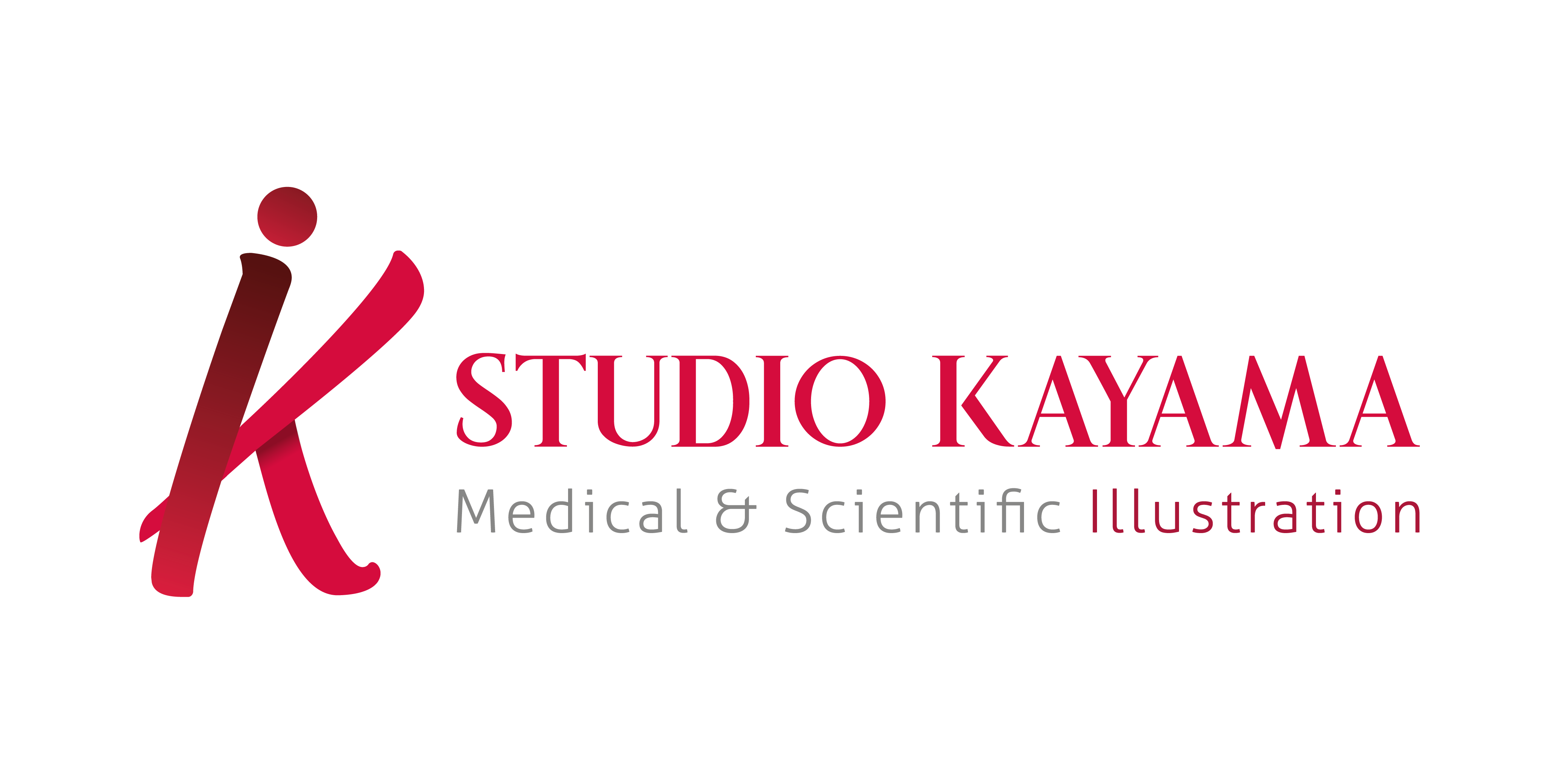Note: If the above video does not play, click here.
How are medical illustrations made?
Happy New Year! Wishing you all the best!
One of the most frequently asked question as a medical illustrator is, “Are all your work done in the computer?” It’s a fair question, but sometimes the questions is followed by, “Computer art is easy and fast, right?” which makes me a little bit sad.
Here is my answer to the above question and comment. You’re right. Sometimes computers make things faster and easier. But remember, they are just tools. Just because there are computer programs like Microsoft Word doesn’t make writing easier, right? Sure, it’s easier to edit and spell-check is handy. However, it’s still the human mind that generates most thoughts, and computers don’t do all the writing for people yet.
If I still have their attention, then I say something like this: It’s the same idea about medical and scientific illustration. I think about what ideas need to be shown and taught. I work with the researchers to create each illustration to cater to what they need. Each structure is drawn with just the right amount of detail so the main idea is crystal clear.
Medical illustration step 1: Research and sketch
Each illustration I create start out after doing some research and making quick sketches. This part sounds really boring, but I believe this is what makes medical and scientific illustrators unique. After the research and brainstorming comes the phase I show you in the video–creating a hand-drawn pencil sketch. I like to use layout bond paper, non-photo blue leads, and a graphite pencil (or a graphite lead-holder you see in the video).
Here in the video I’m creating an illustration for an upcoming science textbook. In it, there will be a section about how anatomy and sports are related. Soccer players’ feet are shown as examples, and there will be illustrations showing how the spikes on the shoes correspond to the skeletal anatomy of the foot. Even though most athletes won’t think twice about their gear, there are scientists working for them to reach their highest athletic potential.
Researchers and scientists are coming up with new discoveries every day, so it’s our job as medical and scientific illustrators to be able to show their findings so ideas spread faster and retained longer. New journals come out every week. Textbooks update with time. More and more illustrations are needed as there are more things to show and more ways to show.
The Takeaway: each medical illustration is created with tender, loving care…or research, facts, and lots of trial and error.
Medical illustration is such an esoteric thing, but everyone’s seen it if they’ve been to a science class or a doctor’s office. Where do you see medical illustration? Do they help you? Please share your thoughts in the comments.
P.S. – First time reading my posts? Thanks for taking the time to stop by! Not only do I write for patch.com, but I’m also founder of the medical and scientific illustration services site, Studio Kayama, and give speaking programs and hands-on workshops that cover medical illustration, Photoshop illustration techniques, and more. I hope you’ll check them out!
If you want to learn more about working together to have your own illustrations created by Studio Kayama, check out the illustration services page and how we work together.

